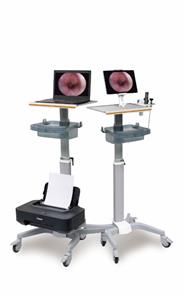The development history of endoscopy-the stage of rigid endoscopy (1806-1932) Part 5
In 1898, Germany Large and Meltzing tried to develop the first stomach camera, but it failed to be practical. In 1911, Elsner made improvements to the Rosenhein gastroscope, adding a rubber tip to the front end as a guide, but the inability to observe the lens became a major defect when the lens was dirty. Nevertheless, the Elsner gastroscope was still in a dominant position before 1932. Killian made and successfully used the first bronchoscope in 1898.
In 1901, Kelling, a surgeon in Dresden, Germany, used the cystoscope invented by Nitze to directly insert into the abdominal cavity through the abdominal wall in order to observe the effect of pneumoperitoneum on the internal organs of the dog's abdominal cavity. This is the predecessor of modern laparoscopy, but the Swedish physician Jacobaeus used this method on humans for the first time. In 1911, Jacobaeus described the examination of the human peritoneal cavity, thoracic cavity and pericardial cavity in an article published by him. He also mentioned the term "abdominal thoracoscopy" for the first time. In 1918, Kenji Takagi of the University of Tokyo used a cystoscope to observe the inside of the knee joint on a cadaver. In 1919, a 7.3mm cystoscope was used to explore the knee joint of a patient, but it was far from the practical application of knee arthroscopy.




